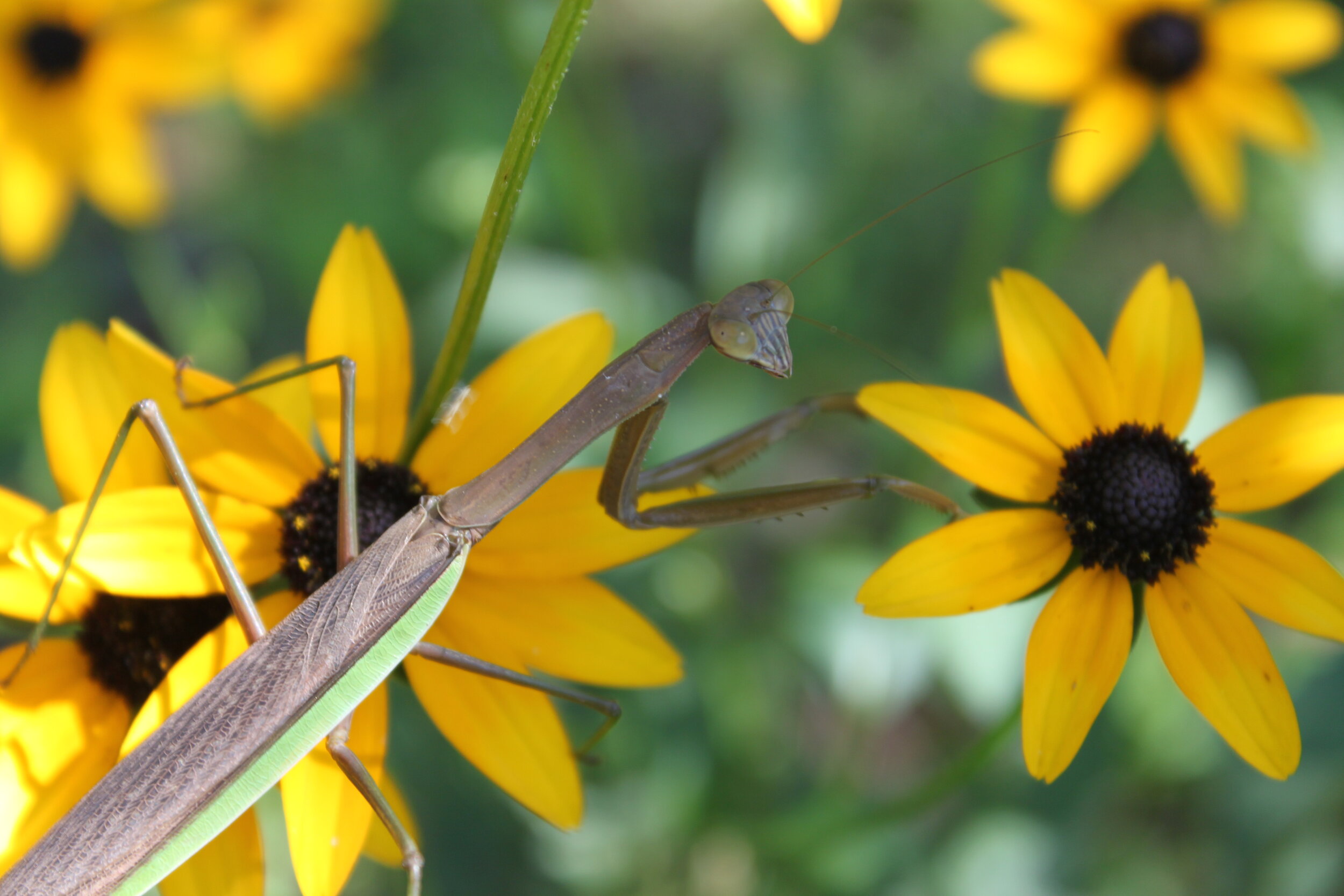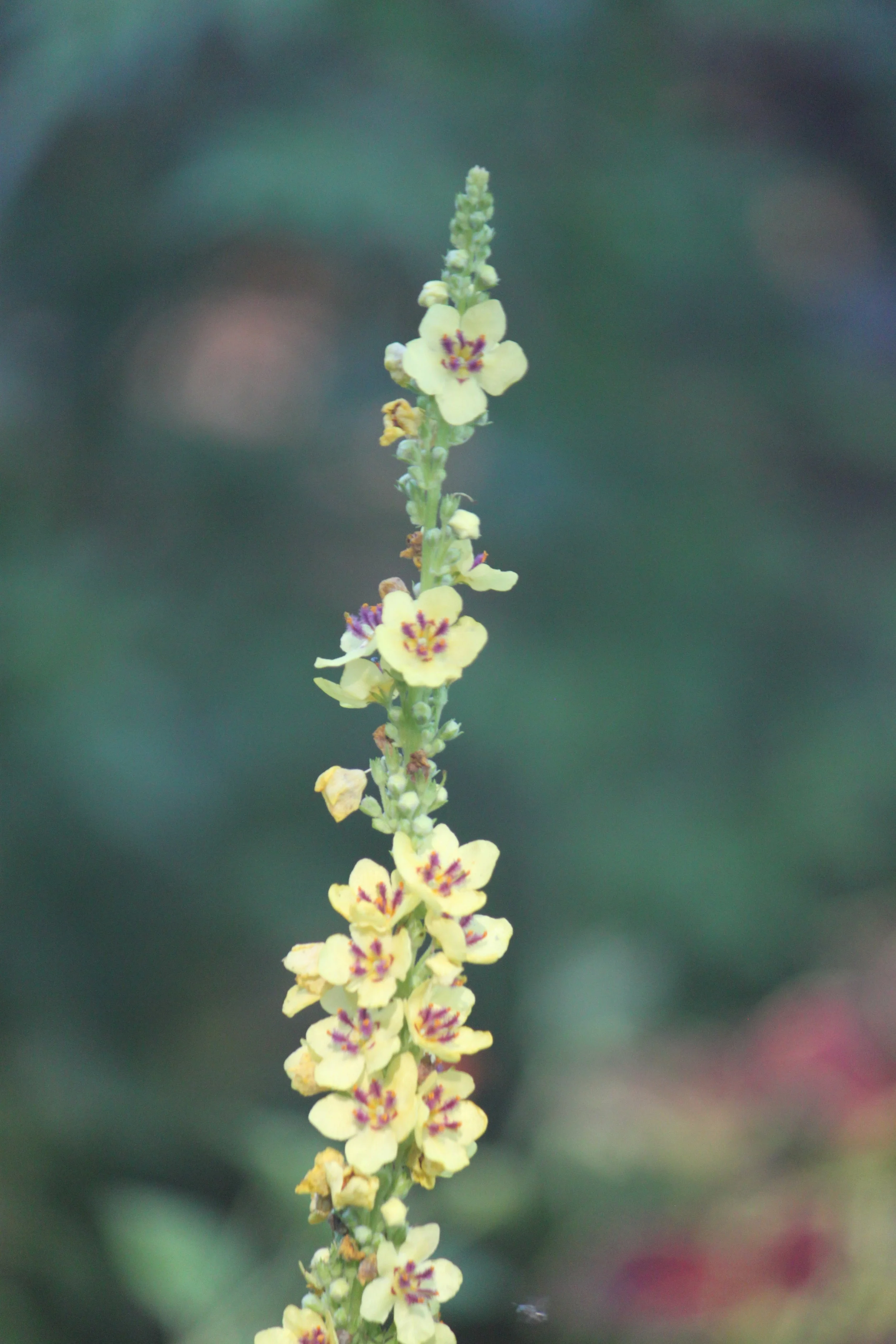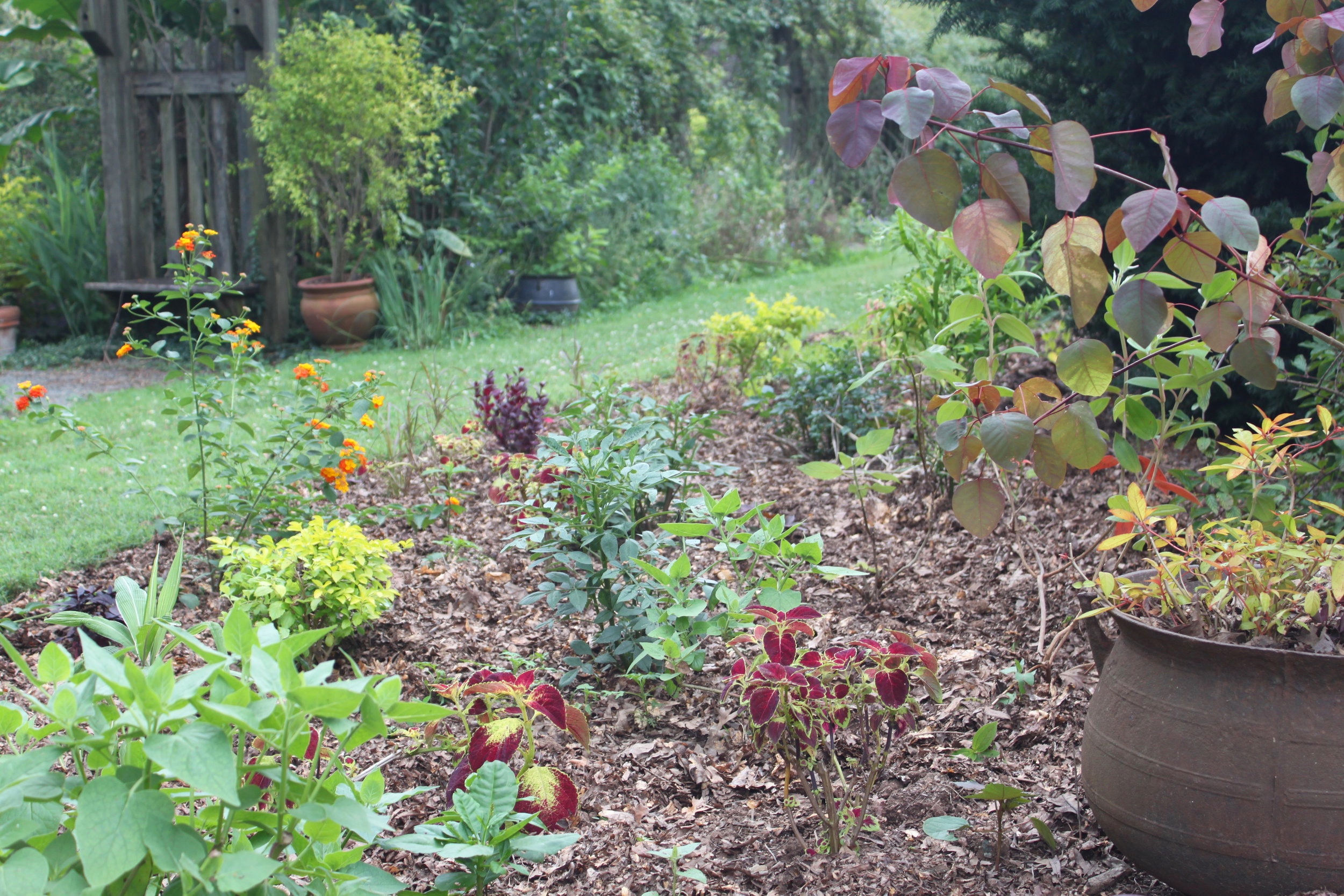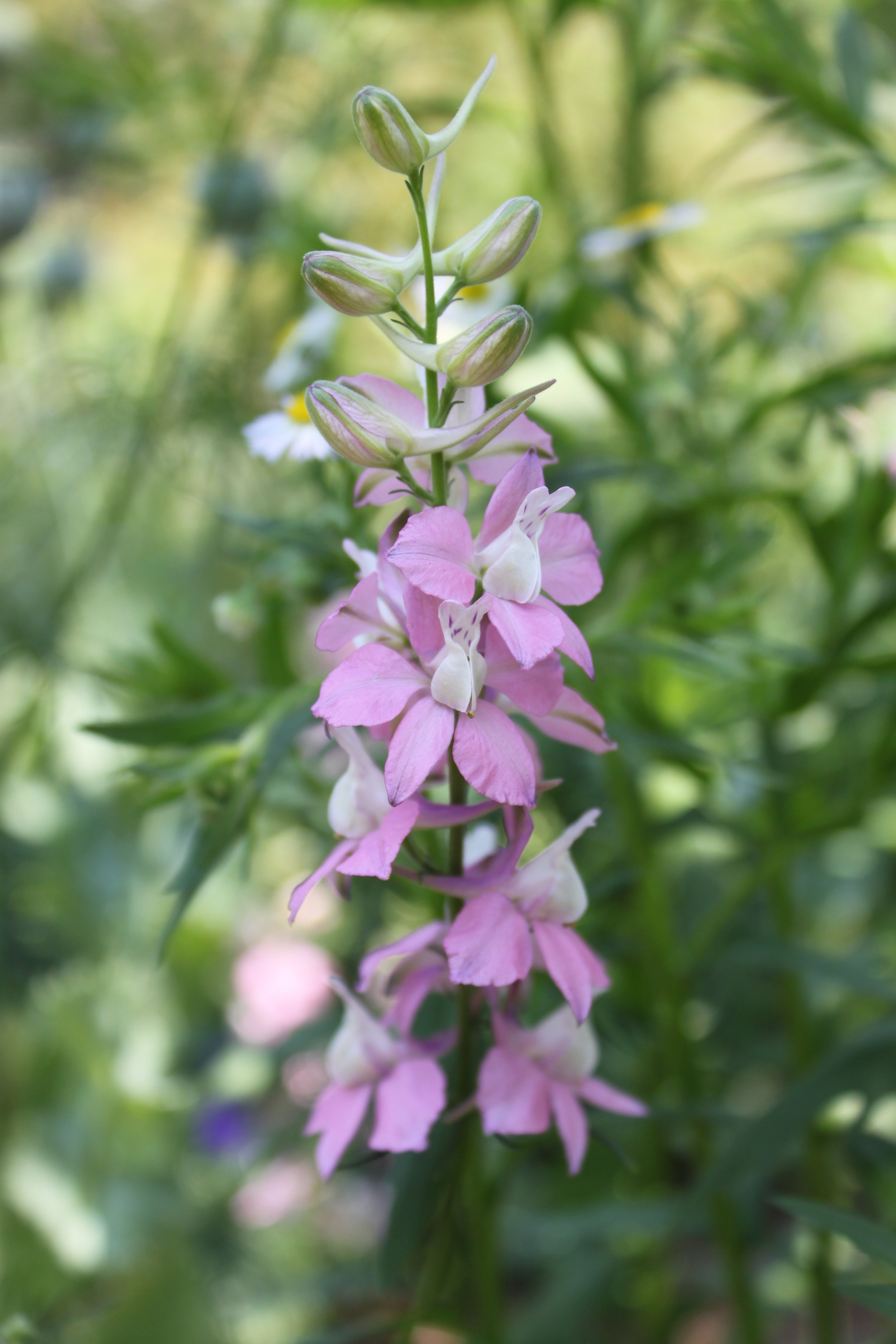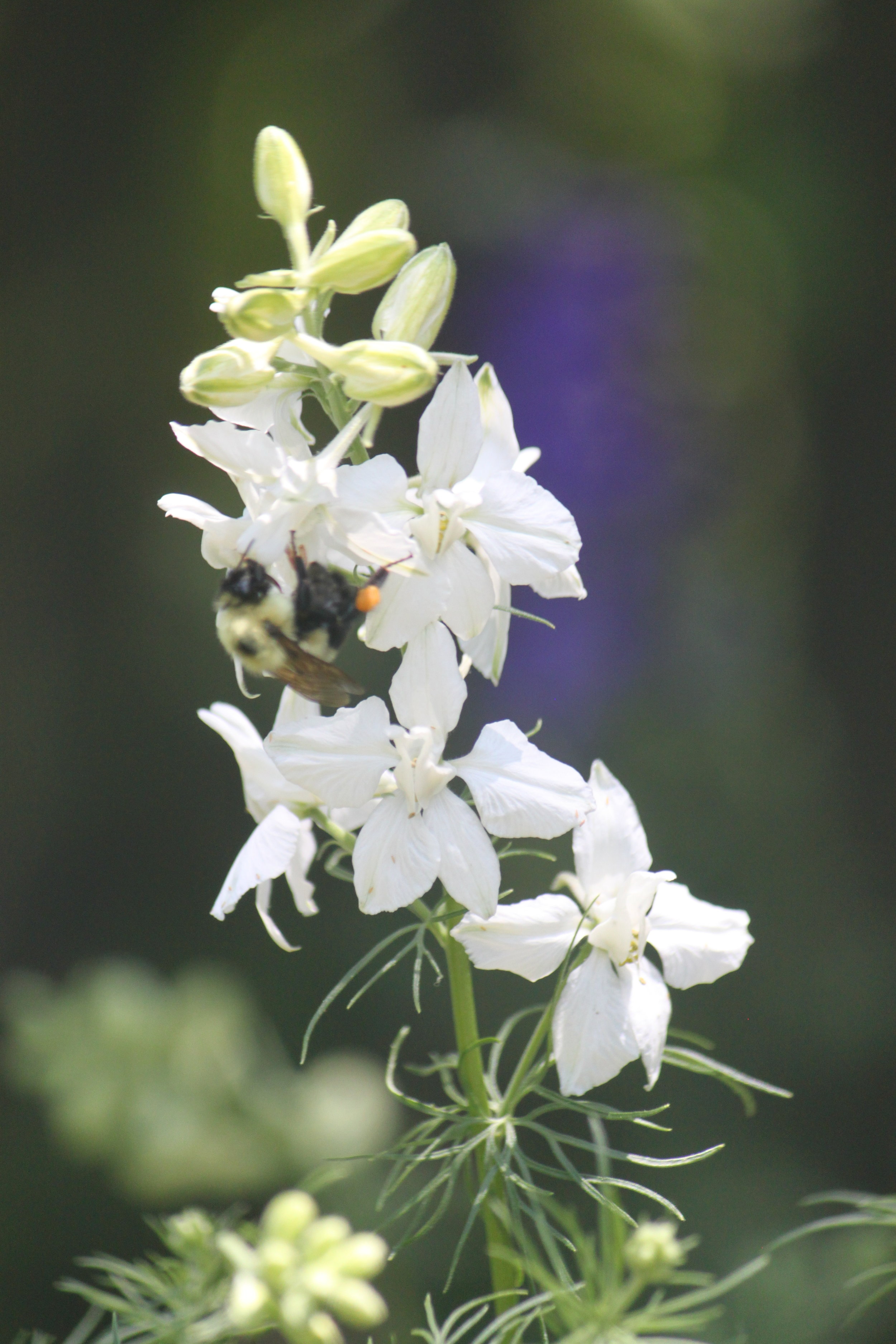We are well into fall with leaves turning color and falling, days growing shorter, and mornings darker. The garden has turned a corner. The Aster Border lives up to its name with masses of flowers in shades of blue/purple and pink and tall Aster tataricus, at the edge of the Blue and Yellow garden, bears large heads of medium lilac flowers on tall, upright stems. Chrysanthemums bloom here and there, but instead of considering that these late summer flowers indicate that the garden is about to go down for winter, we believe this is the beginning of a new year.
Cyclamen cilicium
We have an increase in the number of flowering plants, especially in the woods where bulbs bloom where we expect to find them and even where we don’t. Cyclamen hederifolium, which grows from a tuber, not a bulb, sent up a flower or two all summer, but now they cover large areas. In some places we have similar strains of this species, such as darker flowers or patches of all white ones, mostly pale green leaves, or silver ones. C. graecum blooms best for us in the south shade of a Cedrus deodara where, because the sun appears at a lower angle in the sky, it gets some sun. For the first time ever, a cluster of C. cilicium produced delicate, smaller blooms, which are white or shades of pink, and unlike its cousin, small leaves often marked with white. Even smaller, C. intaminatum blooms with even smaller, but delicate pink or white flowers. C. coum reveals its remarkably variable leaves while holding back the flowers, which will open in December. Growing alongside these plants, Crocus speciosus blooms with blue/purple or white cup-like blooms and delicate C. kotschyanus blooms at the north end of the Metasequoia Garden not far from spectacular clumps of yellow flowered Sternbergia lutea, which is at its annual peak of bloom. We have several different forms of this endangered bulb and are fortunate that it grows well here, best in full sun but still successful in light shade. As colchicums begin to fade, we linger to admire the cultivar ‘Waterlily’ and a delicate white form of C. speciosum. Although we have had Rhodophiala in bloom since early September, we collected seeds from our one fertile plant this morning, just as the final flower faded. We see the emerging leaves of the earliest narcissus along the cyclamen walk. Too early for that? Not at all. We even expect the first flower on a snowdrop before this month is over. In 2017, the leader was Galanthus reginae-olgae on October 16. This season is just as exciting as spring and will continue until we finally admit it is spring.



